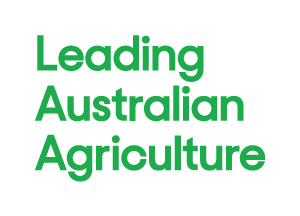SPARSE winter rains, and the prospect of more of the same over spring, across the Australian grain belt are contributing to the strength in global agricultural commodity prices, with the Westpac-NFF Commodity Index for August surging a whopping 25.4% on year-ago levels.
While wheat has been in the vanguard of the price charge, reaching record highs during August, the National Farmers’ Federation (NFF) is urging caution as farmers tread the fine line between locking-in contracts to capitalise on the boom and making realistic production estimates in the face of a lack of rainfall across much of the country.
“Australian farmers face a balancing act – on one hand weighing up soaring commodity prices and the desire to get a piece of the action, while, on the other, making sure their actual productive capacity can meet demand,” NFF Vice-President Charles Burke said.
“Every day farmers make tough decisions based on all factors affecting their operations – including region-by-region seasonal conditions. During the worst drought on record, many of our farmers have endured a rough few years. That has meant debt levels have escalated, while little has been delivered by way of income.
“The NFF has encouraged greater use of modern risk management tools by Australian farmers to assist them in achieving more competitive, sustainable and profitable farming businesses despite the hazards that beset the sector from time to time.
“These include tools, funded under the Australian Government’s revamped $254.7 million Advancing Australian Agriculture (AAA) package, recognising even the best farm managers cannot control the weather, but they do implement strategies that support the health and vibrancy of their business through drought.
“It is the combination of the AAA package, commercial risk management tools and new on-farm technology that sees our farmers well-placed when the rain does come.”
Chief Executive, Westpac Regional and Agribusiness Banking, Graham Jennings noted: “Farmers should maintain contact with their bank and ensure their loans are appropriately structured to their current situation, and the outlook ahead.
“We also urge farmers to seek advice on ensuring the full suite of risk management tools is structured effectively to minimise their exposure to less than ideal mid-year conditions.
“Whether making decisions on appropriate utilisation of farm management deposits, reassessing loan terms, hedging prices or locking-in contractual supply arrangements, farmers, as always, must weigh up the benefits of adopting the higher risk position that offers maximum returns against the potential downside if the worst case scenario does eventuate.”
Compared with July 2007 levels, global prices in August increased for Barley (0.7%), Canola (7.3%), Wheat (18.4%), Sugar (0.7%), Wool (2.1%) and Beef (4.6%) and Dairy (7.6%). Only Cotton (-1.7%) experienced a decrease in price from previous month levels.
The overall weighted index increased by 7.2% during August, taking it to 25.4% above year-ago levels.
[ENDS]
The Westpac-NFF Commodity Index is weighted according to the value of Australian agricultural exports and includes only rural commodities – unlike other price indices that are overshadowed by oil, mineral and energy prices. It provides daily movements based on prices of Australia’s eight key farm exports – barley, beef, canola, cotton, dairy, sugar, wheat and wool – in both $US and $A.





Add comment